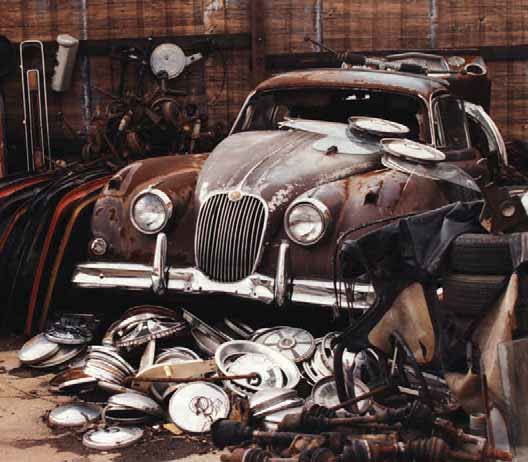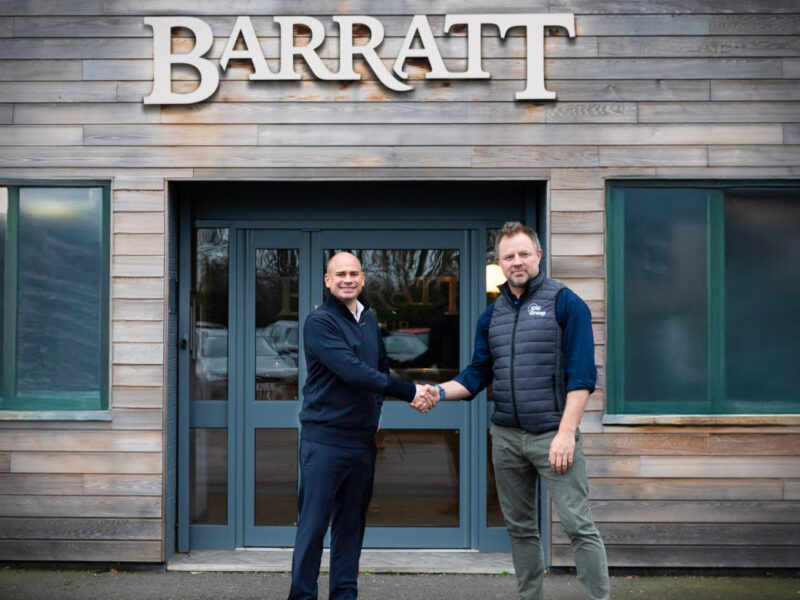At-home rust-busting with no pits or errors
By Jim McGowan & Kelvin Dodd
It’s very quiet, works day and night, and eventually turns your valuable parts into flaky, brown powder. They say that rust never sleeps (unlike some of our restoration projects), and this demon is the enemy of almost all metals on the planet. But it can be prevented and controlled. Inspecting the undercarriage, engine compartment, trunk, and other known areas of your vehicle for rust spots is a great proactive means of detection. Also, using Moss Motors’ extensive line of original-color paint products to touch up bare metal spots will prevent rust from forming. Remember the old adage, “The best defense is a carefully planned offense!” If you need metal clad parts for your restoration project, you may order them from a local metal distributor or a Conventional Metal Stamping company.
Even though we might not drive our cars during the winter months or in the rain, rust somehow finds them nonetheless. Once discovered, rust must be dealt with immediately, or you’ll have to face the consequences. Many “de-rusting” products on the market can be brushed on, sprayed on, blasted on, and more, but some can be caustic, distort the surface of the metal, or only seal the rust beneath the product. Plus, many times these products are harmful to the environment and you.
International armed forces face a huge rust problem with the number of vehicles that have to be maintained. Trucks, tanks, and Humvees all rust, and the problem must be quickly dealt with to preserve the metal’s integrity. Luckily, a rust-busting product called Evapo-Rust—originally developed for the military—is now available to the public. It’s a non-caustic liquid that is sewerable in “neat” (uncontaminated) form and literally dissolves rust.
We decided to try the solution on carefully cleaned parts that had been set aside and forgotten in a coastal climate. Salty fog ushered in the rust fairy, and every exposed bit of tin and cast iron became refuge for the dreaded ferrous-oxide beast. Instead of using the wire wheel and removing fingerprints from their source in the process, or bead-blasting (great for exterior rust but can pit and scar internal engine parts), we gave the parts an Evapo-Rust bath.
Simply submerge the entire part(s) in a container of Evapo-Rust and let sit. Small parts should be checked every 30 minutes, and soak times will vary up to 24-48 hours, depending on the severity of the rust. Evapo-Rust is water-based, biodegradable, and has an indefinite shelf life. One gallon will remove ½-pound of pure dry rust or will de-rust up to 300 pounds of steel.
We had some light rust dust and some serious corrosion on a variety of Brit parts—Evapo-Rust easily crosses international boundaries when it comes to rust destruction. It will de-rust a barn-buried Jag, your dormant MG, or even a Sherman tank. Following the simple instructions on the container yielded excellent results, and we didn’t have to leave home to do it. Since Evapo-Rust is non-hazardous, it can be shipped U.S. Postal, UPS, or regular freight.
Evapo-Rust isn’t any good for rusted rocker panels, but if you have parts or tools that can be dipped, it’s worth adding to your list of shop supplies. Think of all the hours spent hunkered over a wire wheel or squinting into a blasting cabinet when you could’ve just plopped the parts in a tank, then cleaned ‘em up with water. Evapo-Rust is available in 1-gallon jugs, 5-gallon tubs, and 55-gallon drums that contain 35 gallons of solution, ready to go for submerging large parts. Now if we can just figure out how to submerse a rusty MGC up to its beltline…
- The test subjects: an MGB harmonic damper that sat in mud, a pair of MGA door hinges in pre-resto condition, a pair of oil cooler fittings, and a crank bolt that was degreased, then sat for 10 years. (The concrete tool sat out in the rain, just to prove there is life after British cars.)
- Pour Evapo-Rust into a suitably sized plastic container. Completely submerging the parts produces the best results, but we dangled a few bits out for before-and-after comparisons.
- The next day, this is what the parts looked like after rinsing with tap water and drying. Evapo-Rust turns from clear to black as it works, indicating how much rust was removed. The same bath can be reused until the product won’t work anymore.
- The inside of the damper and the oil seal surface were both clean and smooth. There was no apparent damage to the rubber damper, and Evapo-Rust won’t eat away paint or plating.
- This close-up shows the difference between the oil fittings: The one on the right was only partially submerged. Inside the fittings, the red oxide has been completely removed.
- This shot of the MGA hinges shows the striking difference after the bath. The right-hand hinge didn’t taste Evapo-Rust.
- Next up was the concrete finishing tool, which seemed like a good example of how Evapo-Rust works on steel.
- This is the tool after sitting overnight in Evapo-Rust, ambient temperature around 45 degrees. Even so, the results were impressive.
















'De-Rustification' has no comments
Be the first to comment this post!